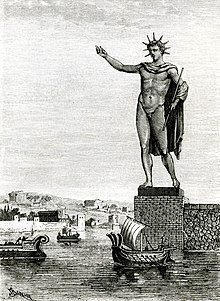User:Nickgoldthorpe/sandbox
Archeoseismology[edit]

 | This is a user sandbox of Nickgoldthorpe. You can use it for testing or practicing edits. This is not the sandbox where you should draft your assigned article for a dashboard.wikiedu.org course. To find the right sandbox for your assignment, visit your Dashboard course page and follow the Sandbox Draft link for your assigned article in the My Articles section. |
Archeoseismology is the study of earthquakes in human history. This is a relatively new field pertaining to the study of past seismic activities such as earthquakes. Major historical archeoseismologic events include The Great Chilean Earthquake of 1960 and 226 BC Rhodes earthquakeare notable examples that have had major effects on history and our modern understanding of seismic events.
Developing Field of Study Historically seismic activities have been recorded as far back as 1831 BC in China, Mount Tai earthquake. Other historic earthquakes are associated with destruction and other major catastrophes that have changed the course of history and modern understanding of plate tectonics. Archeolseismology is a developing field can be studied and expanded further to correlate modern events happening with ones today. In the case of archeoseismology the study of Artifact (archaeology) , building patterns, and repairs can give insight of past seismic events.
Notable Events:[edit]
- A key example of earthquake in history is the 226 BC Rhodes earthquake which toppled one the seven wonders of the world at the time, The Colossus of Rhodes. It is also noted that damage to the city and harbor were evident. The Greek historian Strabo discussed the collapse of the colossus in the 1st century BC.[1]
- A more studied example is The Great Chilean Earthquake of 1960 which was the most powerful earthquake in recorded history at 9.6 on the moment magnitude scale.
- The first recorded earthquake was the Mount Tai earthquake in China in 1831 BC.
Bibliography
Significant Earthquakes - 1900. (n.d.). Retrieved from https://earthquake.usgs.gov/earthquakes/browse/significant.php?year=1900 - Data on earthquakes dating, specifically in the United States, back to the year 1900.
World's Largest Recorded Earthquake. (n.d.). Retrieved from https://geology.com/records/largest-earthquake/ - Gives information on the largest earthquakes to happen from 1906 to recently with reports of damages associated and descriptions of them.
[1]"Strabo, Greek geographer of the 1st century BC". www.wonders-of-the-world.net. Retrieved 2020-05-05.
- ^ "Strabo, Greek geographer of the 1st century BC". www.wonders-of-the-world.net. Retrieved 2020-05-05.
